The heart of the Finger Lakes region has been classified as a Level 2 Drought as of earlier this week.
This week’s Drought Report will focus on how to best interpret the drought data, some important factors to keep in mind, and the historical perspective of our current drought.
Drought Status
The drought continues to intensify for the eastern 2/3rds of the Finger Lakes region. Areas from southern Canandagua Lake through all of the eastern lakes have seen their drought classification go from Level 1 (D1- Moderate Drought) to Level 2 (D2- Severe Drought). The vast majority of the remainder of the region is classified as a Level 1 drought, while areas east of the Finger Lakes have actually been able to escape drought status all together. Western New York is also suffering with Level 2 drought there as well.

For New York State as a whole, a bit over 44% of the state is classified as being in a Level 1 or 2 drought. That is up just slightly from last week’s US Drought Monitor report, when 41% of the state was in a drought. A little over 11% of the state- all in the Finger Lakes and Western New York, is in a Level 2 drought. The amount of area not in any classification of drought or dryness actually increased, from 6% to 10%.
The US Drought Monitor is a great tool for seeing which areas are in a drought status, but I think the naming convention of their categories is poor. That is why I am referring to the levels numerically (i.e. Level 1, Level 2, etc.) instead of by name.
It is also extremely important to realize that the US Drought Monitor has only been around since 2000. Sixteen years is a very short time when talking about climate and records. Proclaiming this the worst drought “on record” when using only sixteen years of data is misleading and irresponsible hype.
Mid-Week Rain Report
It is also very important to keep the time scale shown on the drought maps in perspective. The US Drought Report comes out weekly on Thursday, but the data included in the map is only through Tuesday. So, while the data is ‘new’ on Thursday when it is released, it is actually already a couple of days old. This can be a problem in cases such as this week, when we had some rain in the area on Wednesday and Thursday.

As has been the case all summer, the rain over the last couple of days was of the feast or famine variety. Some areas saw a beneficial soaking, while other areas nearby saw little to nothing. The map directly above shows the estimated amount of rain over the 72 hours ending Friday morning. In other words, this is how much rain fell on Wednesday and Thursday, as Tuesday was dry. I’ve overlayed the boundaries for the different drought classifications.
Some parts of the Level 2 drought area saw anywhere from a half inch to nearly two inches of rain. Other parts of the same classification saw nothing. It will be interesting to see how the Level 2 drought area changes with next week’s report. Beneficial rains also fell in areas that are not in as serious of a drought situation, such as across Wayne County and to the east of the Finger Lakes.
Historical Perspective
It is important to always keep current weather events in their historical perspective. I’ve seen and heard a number of new stories and comments that are questionable, misleading, or straight out nonfactual. Yes, this is a bad drought for certain areas, and people are being negatively impacted. No, this is not the worst drought in 150 years.

As I have done in the past for historical analysis, I will look at the Ithaca climate station. Ithaca has a very long record, dating back to the early 1890s. For this analysis, Ithaca has the added benefit of being in the midst of some of the worst drought conditions in the Finger Lakes region. A recent New York Upstate article, using recent rainfall data, proclaimed nearby Trumansburg as the driest location in New York since June 1st. (As an aside, yours truly was hired to produce the rainfall map used in the article).
The amount of rain recorded in Ithaca for June was tied for its second lowest at 1.07″. The record is 0.87″, set back in 1927. The record lowest precipitation for May is even lower, at just 0.30″ set in 1903, while this year saw 1.90″.
Drought is often the product of prolonged dryness, not just a month or two of below average precipitation. Looking at the last three months of data- June, May and April, Ithaca had its 6th driest period. Extending out to six months (January-June), 2016 ranks as the 10th driest. So far this year, through July 14th, Ithaca has had over an inch more precipitation than the driest year in 1962.
A more throughout examination, which I unfortunately am unable to do this morning, would not limit the three and six month analysis to just April-June and January-June. For example, I am certain that there are probably some July-September periods that are even drier that would push the current three month total further down the list. Perhaps I can look at that next week.
In conclusion, yes, this is a bad drought. Even if it broke now, it would probably rank with some of the other worst droughts the area has seen. I would argue that it probably still falls short of being ‘the worst’ and is not significantly different than any number of other events extending all throughout the climate record. Could that change? It certainly could, but only time will tell if it will.


Kate Freedman
Here in Newfield the only drops I’m feeling is the sweat dripping into my eyes!